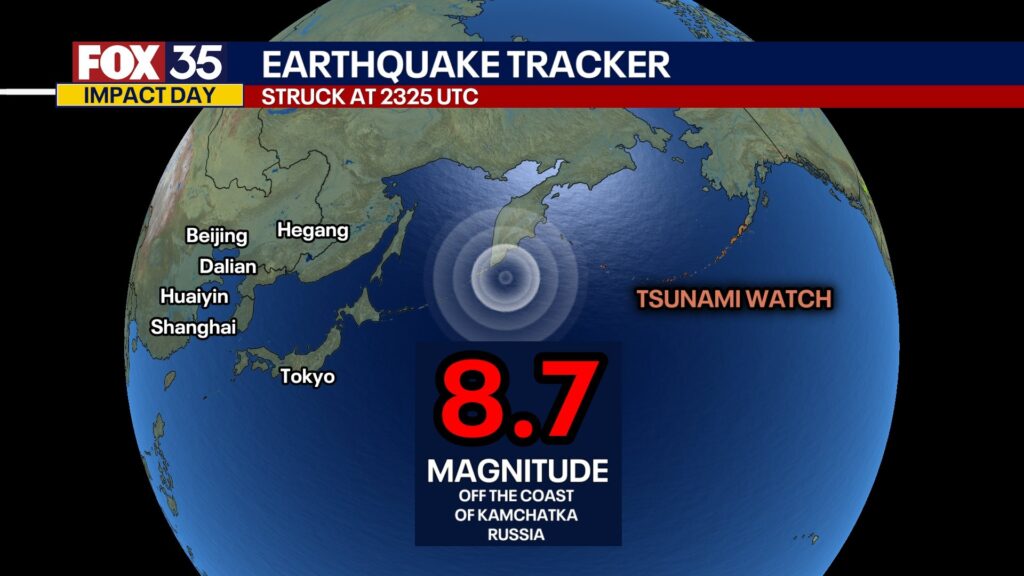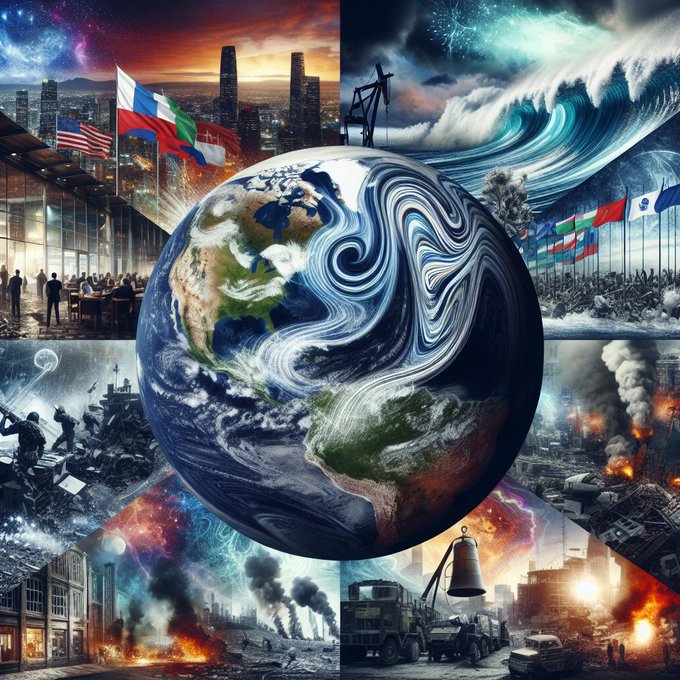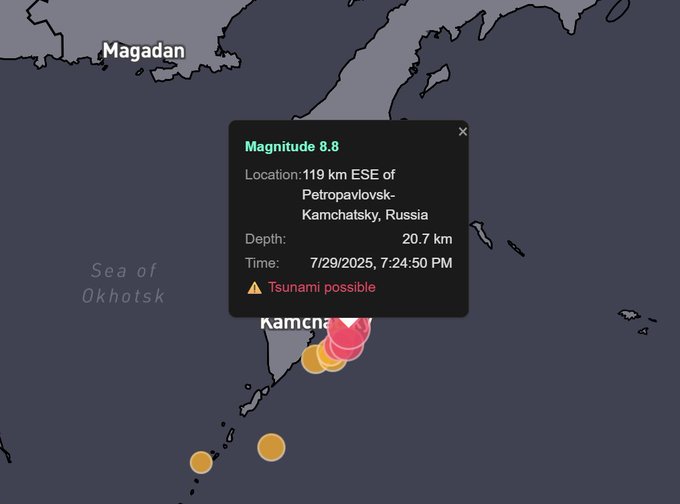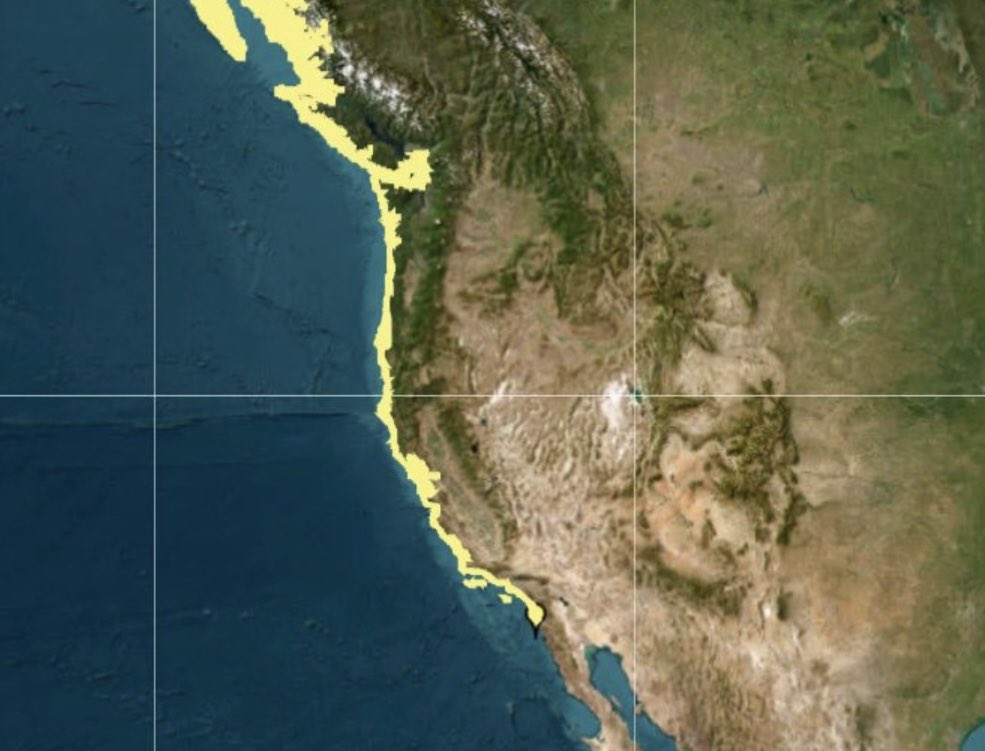The topic of earthquake tsunami warnings Hawaii has dominated news headlines and social feeds in July 2025, especially following the historic 8.8-magnitude earthquake off Russia’s Kamchatka Peninsula. The event triggered urgent tsunami warnings not only in Hawaii, but across the entire Pacific rim, raising questions about safety, impact, and the real risks of both earthquake and volcano eruption activity in the region. In this comprehensive article, we’ll break down what really happened, and explore impacts across the US (including Seattle, Washington) and the Pacific, and provide the latest expert updates.
- What Triggered the Earthquake Tsunami Warnings in Hawaii?
- Did Hawaii Get Hit by a Tsunami Today?
- Did the Tsunami Affect California and the US West Coast?
- Tsunami Impacts Beyond the US: French Polynesia and Pacific Tracking
- The Role of Earthquake, Volcano Eruption, and Tsunami Warning Systems
- 2025 Earthquake and Tsunami Alerts: Quick Reference Table
- Highlights: Why Earthquake Tsunami Warnings Matter in Hawaii
- Earthquake Tsunami Warnings Hawaii: FAQs

What Triggered the Earthquake Tsunami Warnings in Hawaii?
A massive earthquake, registering 8.8 in magnitude, struck the vicinity of the Kamchatka Peninsula in Russia’s far eastern territory on July 30, 2025. This event is now among the six strongest earthquakes ever recorded, according to the US Geological Survey. The force of the quake pushed colossal waves outward across the Pacific Ocean, setting off earthquake tsunami warnings Hawaii authorities haven’t seen in years.
The Pacific Tsunami Warning Center immediately issued alerts for all Hawaiian Islands, as well as for California, Alaska, Washington, and even as far as French Polynesia. Panic and urgent evacuations followed in Honolulu, Maui, and other low-lying areas, with state officials activating rescue teams and public shelters.
Key Timeline: July 30-31, 2025
| Time (HST) | Event Summary |
| 7:17 PM, July 29 | First tsunami waves forecasted to reach Hawaii |
| 8:00 PM | 3–4 ft waves hit Isles (up to 4.9 ft at Hilo, 4 ft at Maui) |
| Overnight | Flooding in coastal regions, certain docks, and parking areas |
| By 10 PM | Tsunami wave heights appear to have peaked, no major structural damage |
| July 31 Morning | Warnings downgraded to advisories; continued watch for aftershocks/surges |
Officials repeatedly stressed: tsunamis can bring multiple waves, hours apart, so vigilance is needed even after the first wave.

Did Hawaii Get Hit by a Tsunami Today?
Yes—Hawaii experienced tsunami waves up to nearly five feet high in some locations, with flooding reported in parking lots, harbors, and some coastal infrastructure. However, there was NO catastrophic damage, and the state’s extensive warning systems and evacuations helped prevent any loss of life or major injuries. By July 31, authorities had downgraded the tsunami warning to an advisory, but monitoring of tides and surges continued.
Governor Josh Green called the emergency response a success, saying the state “is not yet in the clear” but has so far avoided the worst-case scenario. Residents were encouraged to stay away from the coastlines for several hours as surge patterns can be unpredictable.

Did the Tsunami Affect California and the US West Coast?
Yes—smaller tsunami waves reached the California coastline, with impacts observed as far north as San Francisco and as far south as Arena Cove, California. Wave heights ranged from 2 to 5 feet in many places. Localized flooding and dangerous currents were reported, but there was no major destruction. As of July 31, tsunami warnings for California, Washington, and Oregon have mostly been downgraded to advisories, and beaches have re-opened with caution.
Seattle, Washington, and parts of the state’s Pacific coast saw similar advisory statuses and minor surges, but no significant inland impacts.

Tsunami Impacts Beyond the US: French Polynesia and Pacific Tracking
French Polynesia, particularly the Marquesas Islands, issued urgent tsunami warnings and saw waves as high as 1.5 meters (about 5 feet), but the worst predicted impacts did not materialize. Local authorities allowed residents to return home by July 31 but advised continued caution due to possible additional waves.
Advanced tsunami tracking systems across the US and Pacific—like the NOAA U.S. Tsunami Warning System—helped provide real-time data for emergency responses and public communication.
The Role of Earthquake, Volcano Eruption, and Tsunami Warning Systems
This specific tsunami was caused by a seismic occurrence (earthquake), yet Hawaii and the Pacific islands are also on alert for potential tsunami dangers following major volcanic eruptions.
Both are closely monitored by the Pacific Tsunami Warning Center and local agencies in an integrated approach to hazards and safety. In recent years, Hawaii has invested heavily in both seismic and volcanic monitoring to enhance early warning and evacuation effectiveness.
2025 Earthquake and Tsunami Alerts: Quick Reference Table
| Region | Date(s) | Max Wave Height | Impact Level | Warning Status |
| Hawaii | July 30-31 | 4.9 feet | Coastal flooding | Warning → Advisory |
| California | July 30-31 | 2–5 feet | Minor coastal flood/currents | Warning → Advisory |
| Seattle, WA | July 30-31 | <1.5 feet | Minor surges, no inland flooding | Advisory (lifted by July 31) |
| French Polynesia | July 30-31 | 1.5 meters | Coastal risk, no significant damages | Advisory lifted |
Highlights: Why Earthquake Tsunami Warnings Matter in Hawaii
- Hawaii’s location makes it vulnerable to distant earthquakes and volcanic events that may generate tsunamis.
- 2025’s Pacific event is a reminder that even when epicenters are thousands of miles away, waves can imperil US states and Pacific territories within hours.
- The state’s advanced warning systems, community awareness, and organized evacuations played a key role in minimizing harm.
- Hawaii, California, Seattle, and the broader Pacific track tsunamis with real-time data to adjust beach access and warning levels dynamically.
Earthquake Tsunami Warnings Hawaii: FAQs
Q: What caused the earthquake tsunami warnings Hawaii in July 2025?
A: A record 8.8-magnitude earthquake near Russia sent powerful tsunami waves across the Pacific, triggering widespread warnings for the Hawaiian Islands and the US West Coast.
Q: Did Hawaii get hit by a tsunami today?
A: Yes, Hawaii saw waves up to almost five feet high, causing some coastal flooding but no major damage or deaths due to extensive warning and evacuation protocols.
Q: Did the tsunami hit California or Seattle, Washington?
A: Yes, tsunami waves—up to 5 feet in places—reached California and smaller waves affected parts of Washington and Oregon. Alerts were quickly downgraded after the main surge.
Q: Is French Polynesia safe?
A: The Marquesas Islands had warnings and waves of about 1.5 meters, but alerts have been lifted and residents returned home safely.
Q: How are tsunami warnings issued and tracked in the US?
A: The NOAA/U.S. Tsunami Warning Centers use seismic, ocean, and satellite data to provide real-time warnings, including text alerts, sirens, social media updates, and direct coordination with state emergency teams.
Q: Are volcano eruptions also a tsunami risk for Hawaii?
A: Yes—while most recent tsunamis are caused by underwater earthquakes, significant volcano eruptions or landslides in/near the ocean can trigger tsunamis. Hawaii actively monitors both risks.
Final Takeaways
Earthquake tsunami warnings Hawaii are a crucial safety net for island residents and anyone along the Pacific. The July 2025 event demonstrated the effectiveness of current tracking, preparedness, and rapid response systems—even when dealing with one of the most powerful earthquakes in modern memory. As the Pacific “Ring of Fire” stays active, it’s vital for everyone in Hawaii, the US West Coast, Seattle, French Polynesia, and beyond to remain aware, prepared, and respectful of official alerts—saving lives and minimizing risk from nature’s most powerful forces.
Read more article please click on the Link.